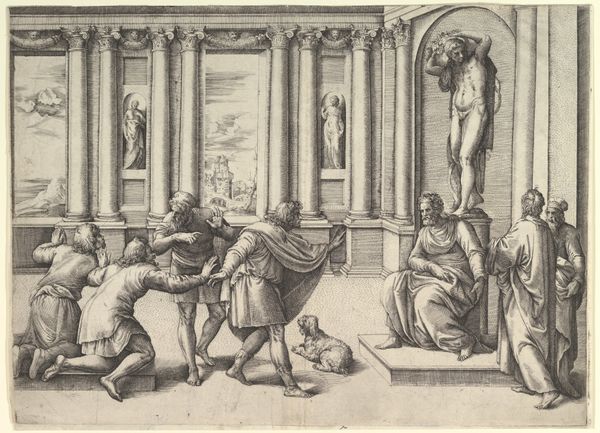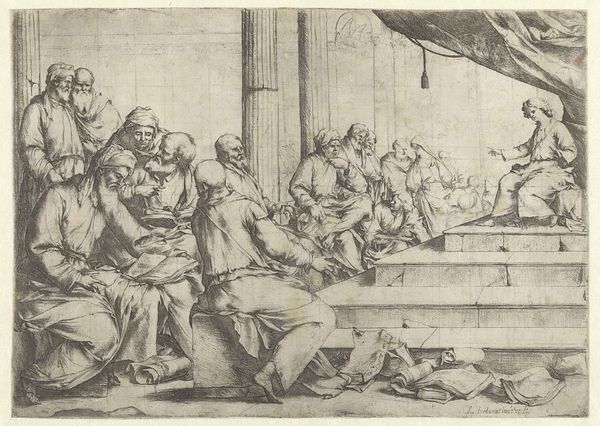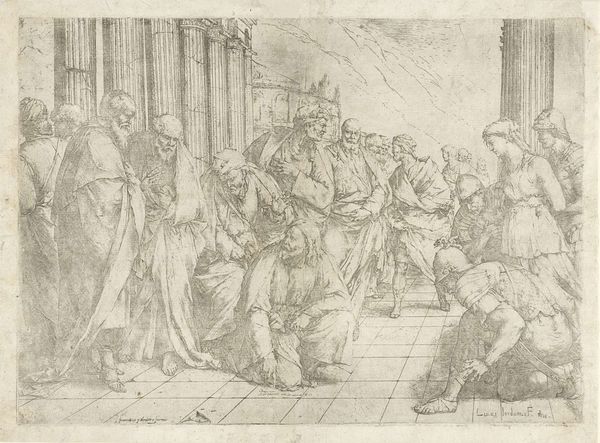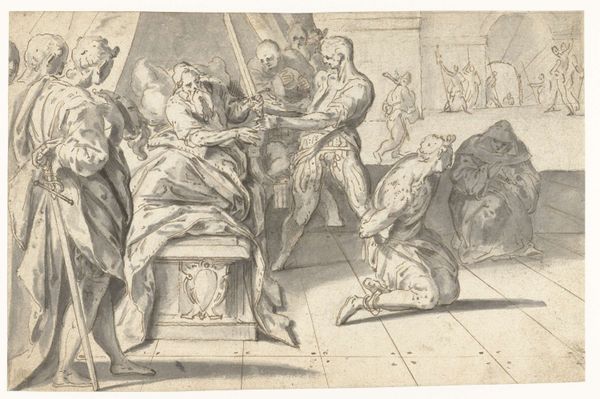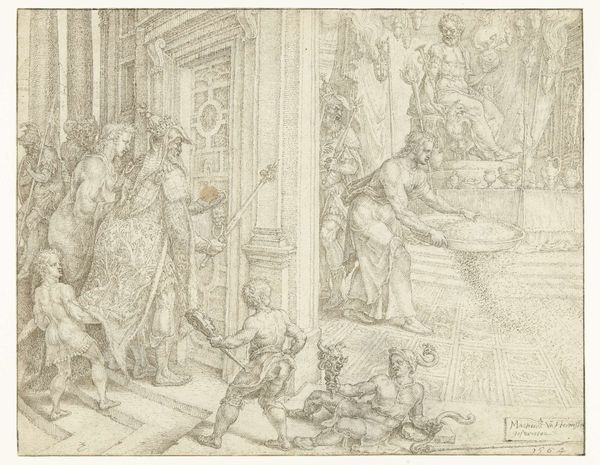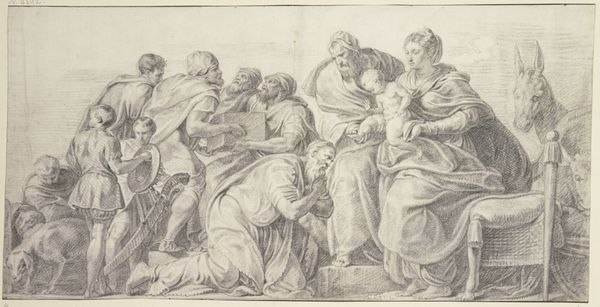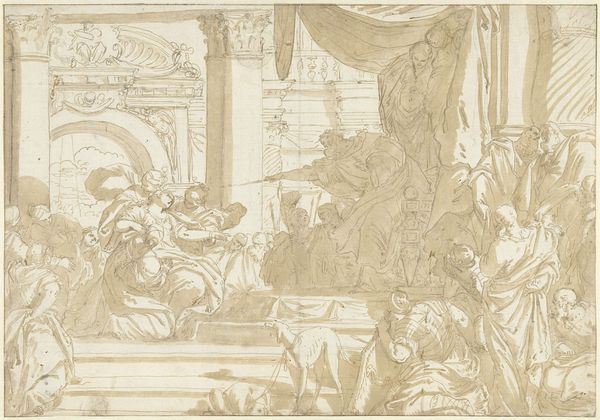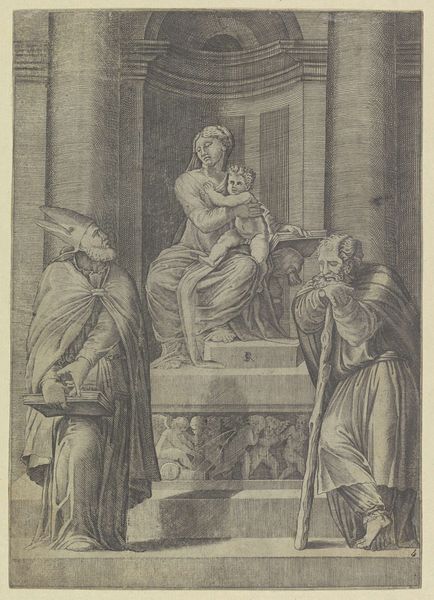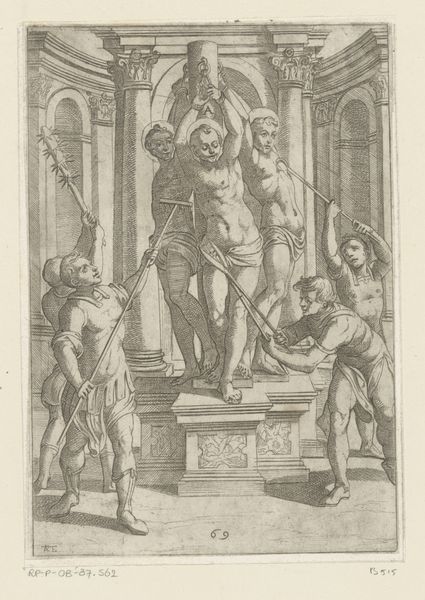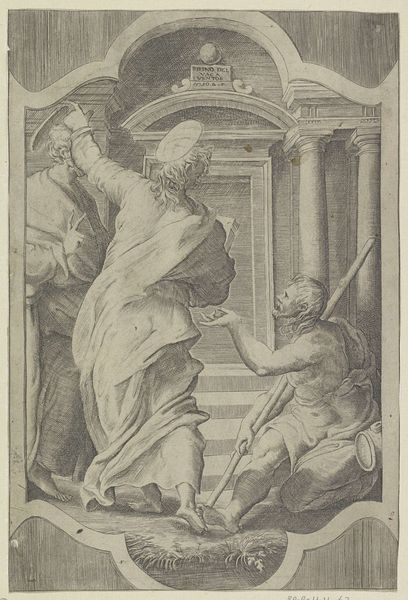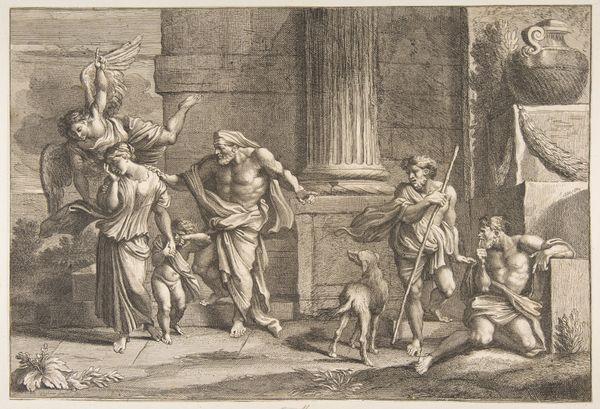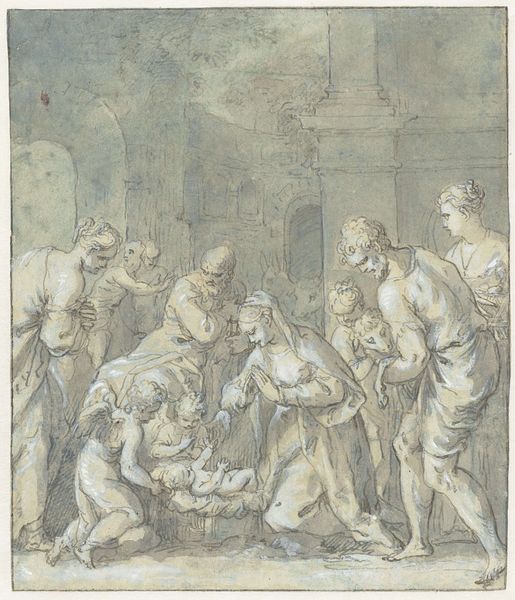
drawing, print, ink, engraving
#
portrait
#
drawing
#
narrative-art
# print
#
mannerism
#
figuration
#
ink
#
history-painting
#
engraving
Dimensions: height 356 mm, width 491 mm
Copyright: Rijks Museum: Open Domain
Curator: This drawing, "Mannen op audiëntie," by Battista Franco, likely completed between 1520 and 1561, presents us with a compelling visual puzzle executed in ink and engraving. Editor: My immediate impression is one of restrained chaos. There’s this meticulously rendered architectural space juxtaposed with the figures displaying heightened gestures and emotion. The scale feels…deliberately off. Curator: Indeed. Franco’s Mannerist style really shines through here. Notice the exaggerated poses, the serpentine lines used to define musculature, the compression of space. It rejects classical ideals of proportion and harmony. Editor: And what is this narrative? The title refers to men at an audience. This moment in history painting gives an intimate glimpse of interactions of high importance; look how this leader seated poses like he has ultimate authority and disregard for anyone who opposes. How do we know what is going on? Curator: Determining the exact narrative remains challenging. We do not have explicit details about the content itself, so analyzing becomes the main task here, it feels much more relevant. See how his robes define status but at the same time constrain his gestures; the setting also influences us to give value to who gets heard or disregarded in a specific place. The artist shows tension through postures. The emotional drama plays out formally through contrasts – the agitation of those on the left mirroring the calculated calm of the seated figure and his entourage on the right. Editor: It does seem to propose that power resides more in performance than position. Think about how different bodies respond to what it must be someone extremely relevant in such space: from kneeling, screaming, standing in anticipation, seated in a regal-imposing pose. Very telling! This political tension is heightened by the rigidity in such context. Curator: I concur, seeing this piece as not so much an accurate illustration of one past event, but rather a representation on social structures that show power through hierarchy, is something palpable here. Franco transforms mere historical recording into psychological commentary, as if this political event was already embedded to what has occurred previously in people's personal and internal history. Editor: Exactly. By presenting not only how a moment looks like, but its essence to create what's expected for "those in charge", we become witnesses ourselves on an actual contemporary setting, despite living years later than such representation has occurred. Very insightful!
Comments
No comments
Be the first to comment and join the conversation on the ultimate creative platform.
